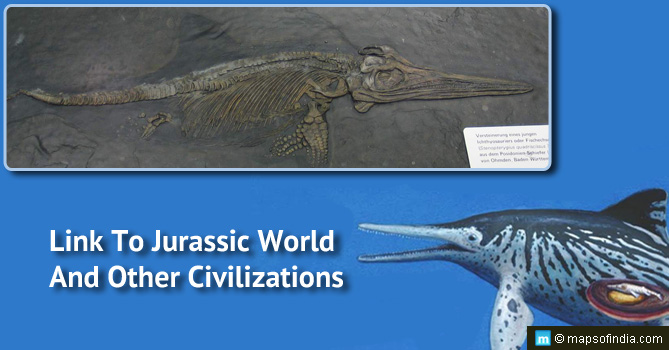What came first, the chicken or the egg?
The origin of universe has always been a mystery and how this world has evolved will always intrigue people of every age. Archaeologists are always digging up to find clues and answers which tell a little more about this world — How different it was from the one we are currently living in?
The world heritage sites and different monuments suggest what life was like for the common people in ancient times, but there is a lot more to explore. Go through the list of some recent discoveries:
Stone Tools discovered beneath the Toba ash in India.
About 76000 years ago, a massive Toba-volcanic eruption took place in Indonesia in which sulfuric acid rained over the earth and about 3000 kilometres of land was covered with magma. Indian land was also showered by volcanic ash, which remains deposited on the ground even today. Contrary to all prior logics, in January 2018, stone tools were found in southern and northern parts of India, both below and above the ash. These tools were quite like the ones which humans created in Africa. Thus, it became clear that homo sapiens lived on Indian land even before that volcanic eruption. The findings also gave an idea that the super-eruption led to a massive environmental destruction and many people would have lost their lives.
152-million-year-old Ichthyosaur fossil discovered for the first time in India.
The team comprising of scientists from India and Germany discovered fossil of an extinct marine reptile in the Kutch desert, Gujrat, in October 2017. They identify the specimen with Ophthalmosauridae, a family of ichthyosaurs which lived in the oceans between 165 and 90 million years ago. The fossil was found inside rocks from the Mesozoic Era, marking a Jurassic record in India and proving some sort of biological connectivity of India with the other continents of Jurassic world. It gives us a nudge that a lot more could be discovered here from that thrilling era.
50,000-year-old remains discovered in Narmada Valley
The excavation in Narmada Valley, carried out by Shridhar Vakankar Archaeological Research Institute in year February and March of the year 2017, led to the discovery of about 350 archaeological remains which were around 50000 years old. The exploration of micro relics was being done by dissolving and filtering the soil which was obtained during excavation. The relics are artefacts discovered from sites which offer insights into the culture of its creator and user.
Ruins of a Forgotten Civilization in Mizoram
In 2016, the archaeologists came across ruins of a “Great Forgotten Civilization” at Vangchhia, Champai district in Mizoram. The discoveries proved that there might have been an old civilization which flourished in the region. Walls made of big stones and terraces which may have served as burial sites were discovered by the research team. This gave them a nudge that an old lost city may have existed on that ground. Fragments of charcoal and pottery were collected for carbon dating and making more scientific analysis. More research would lead to a better knowledge about the civilization.
Ancient Harappan Era skeletons found in Haryana
In 2015, the remains of Harappan Civilization (Indus Valley Civilization) were found in Rakhigarhi, a village in Haryana. These included skeletons of two men, one woman and one child, along with shell bangles and pottery. Several tools like fish hooks, copper tools, bone hairpins and various toys having shapes of animals and mythical creatures were found, giving clues about how the people lived. Interestingly, archaeologists even believe that if latest technology is employed on the skeletons and their DNA is obtained, it would give an idea how Harappans, one of the oldest civilizations of the world, looked like back in the days.
The life of real archaeologists may not be as interesting as Indiana Jones, but their life still is quite thrilling. Dropping insights into the past, they spend all their energy excavating grounds and further do research on the remains to gain little pieces of knowledge about the history. Not just that, the discovery of various minerals leads to scientific and technological developments as well. What goes into the ground, is extracted and made further use of. What goes around, comes back around in its own way, doesn’t it?






